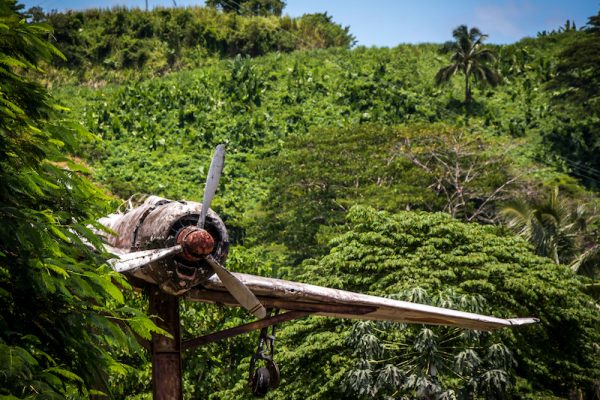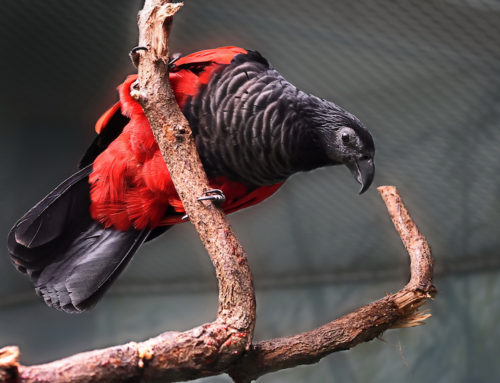Exploring WWII relics in Papua New Guinea
Thursday 16th July 2020

The guns may have fallen silent almost 75 years ago, but the history of WWII is very much alive and evident across Papua New Guinea.
From submerged warships to hidden battlements and abandoned planes, the fierce fighting that took place in Papua New Guinea left a legacy of WWII relics that can be found across the island nation.
Here’s a quick snapshot of what’s on offer when exploring the WWII relics in Papua New Guinea.
Fighting in the South Pacific
Throughout WWII, Papua New Guinea proved a highly contested strategic position in the battle for the Pacific. A site of some of the most protracted and fiercely fought battles between the Japanese and Allied forces, the island nation was initially a base for the Japanese at Rabaul, and later became renowned for the Battle of the Coral Sea and infamous land-based campaigns like Kokoda.
Fighting extended from the sea to the air and into the dense mountainous jungles of PNG, with a litany of relics left behind as testament to a turbulent time in history.
Provinces like New Britain, Oro, East Sepik, Sandaun, and Morobe all feature an insight into this fighting past courtesy of WWII relics, while Madang and Rabaul are renowned for the sunken aircraft and warships that now attract people from around the world for diving.
Meanwhile, formal recognition of the fierce fighting that took place in PNG can be found at places like Bomana War Cemetery, and the Kokoda Track continues to draw interest from avid adventurers looking to experience the conditions endured in one of WWII’s most hard fought and perilous fighting campaigns.
Where to find the past
Rabaul, East New Britain
If you have to narrow down the list of options in your search for WWII relics, Rabaul in East New Britain is the perfect place to start.
As the former base for Japanese forces, this region has a wealth of relics scattered about town. And you don’t even need to venture far. At the end of the Rabaul runway, for example, you’ll find a Japanese twin- engine naval attack bomber known as the Hamaki.
Meanwhile, the waters off Rabaul also offer a wealth of dive sites where aircraft wrecks take on an eerie form after being coated in volcanic ash.
Rabaul is also home to the Pacific’s largest Japanese Peace WWII memorial, which commemorates many who lost their lives in battle.
West New Britain
West New Britain is also home to some impressive wrecks. A B-24 Liberator and a B-25 Mitchell (US Bombers) rest in the hills behind Talasea, while a number of rusting relics are accessible at Lombrum, Manus Province, which acted as a large US naval base.
Aitape, Sandaun
Formerly known as West Sepik, Sandaun is PNG’s most north-western province, and is home to the small town of Aitape, which was also occupied by the Japanese during WWII.
At the local airstrip, aircraft wrecks can still be found while a B-24 bomber rests outside the local high school between the airstrip and town.
East Sepik
In East Sepik Province, Japanese war relics can be found at East Brandi High School, east of Cape Moem Army Base while bomb craters can still be found at the Boram Airport runway.
Between Kreer market and the hospital, you will find the rusting remains of Japanese landing barges on the beach. A range of war relics can also be found throughout the Salamaua District in Morobe.
Bomana War Cemetery
Closer to Port Moresby is Bomana War Cemetery- the largest war cemetery in the Pacific region.
First established in 1942 while fighting continued in the Pacific, Bomana War Cemetery is the final resting place of over 3824 Commonwealth servicemen, 699 of whom are unidentified.
The majority of those laid here are Australians who lost their lives in campaigns staged throughout Papua and Bougainville.
With row upon row of neat, beautifully maintained white headstones, Bomana not a relic but rather a stark reminder of the price of war.

Paga Hill
In the coming years Paga Hill will also offer a fascinating insight into PNG’s WWII history with the construction of a war museum.
Comprising large scale indoor halls and outdoor exhibition spaces, the museum will incorporate the WWII relics that remain on Paga Hill in addition to the proposed museum.
Current plans for the museum feature distinctive architecture, while Paga Hill and PNG’s military history will be revealed and connected through physical links with existing bunkers and didactic displays.
About Paga Hill Estate
Paga Hill Estate is a world-class, master-planned estate in the heart of Port Moresby, Papua New Guinea. The waterfront site is the first comprehensively planned multi-use development in Papua New Guinea to be enjoyed by both residents and visitors alike.
The all-inclusive development will include vibrant public spaces and waterfront promenade, luxury hotels, residential apartments, restaurants, retail, commercial space, a Trade, Exhibition & Cultural Centre, restoration of WWII relics, marina precinct and a nearby international cruise liner terminal.






